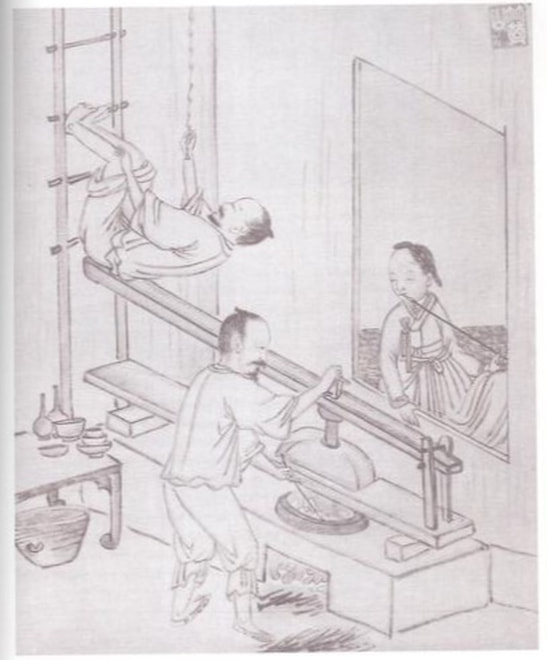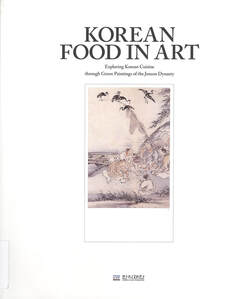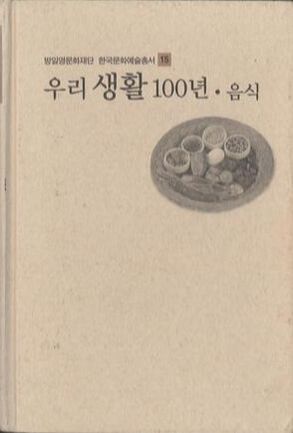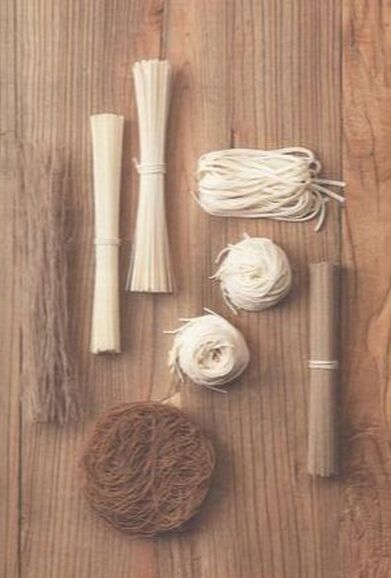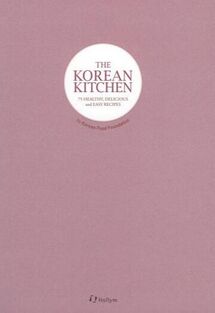History of Noodles in Korea
|
Making Noodles
Kim Jung Geun c.1882-1885 Light color on paper 25.4 x 20.3cm Ethnological Museum of Berlin |
Two men are making noodles using a press. The female tavern hostess, pipe in mouth, is sitting in the room beside the kitchen watching them work. One of the men has climbed up the ladder and hangs from the press boils them in water, stirring them in the boiling water with a long stick..." - Korean Food in Art : Exploring Korean Cuisine through Genre Painting of the Joseon Dynesty
|
|
|
Buckwheat Noodles from a Press Machine The records of a Song Dynasty envoy from China to the court of the Koryŏ Dynasty mentions noodles from that time. According to this book, wheat production was low in Koryŏ and the price was high. Hence wheat flour was rarely used, except to make food for the grandest banquets. Even in the following Chosŏn Dynasty wheat flour noodles were very rare. Noodles were instead made with a variety of other ingredients, including mung beans, yams, arrowroot, millet, red beans, and Job's tears. But the favorite of all from the king down to the common people were buckwheat noodles.
|
Chosŏn Manga, an illustrated book on Koreans' everyday culture written by a Japanese in 1909, introduces a noodle press such as seen in the painting 'Making Noodles': "Apparently the Korean people love noodles, for no matter which restaurant you go to there is not a single place that does not sell them. The noodles are as white as snow, much whiter than Japanese noodles. There is a place for making noodles in the corner of every restaurant, which can be seen from the outside. [...] At the bottom a big iron pot full of boiling water sits on the range. Above the pot is a big, thick device that looks like a typesetting block with holes. The noodle dough is put through these holes. When the mallet comes down, the dough is pressed through a net, making string-like noodles that fall into the pot of boiling water below. The noodles cook in the water producing a white froth. When ready, they are taken out and placed in cold water. At last, high-quality white noodles are made."
- Korean Food Art : Exploring Korean Cuisine through Genre Painting of the Chosŏn Dynasty
The Advancement of the Noodle Industry in Korea Koreans made noodles throughout their history, but because wheat production was low, Koreans made noodles only on special occasions such as weddings or birthdays. They wished for lasting longevity by eating long-shaped noodles. This situation changed after the Korean government encouraged the use of flour for food to make up for the lack of rice in 1967. Due to this policy, the consumption of flour increased and wheat production was advanced. After this, the noodle industry started to expand.
At first, mostly dried noodles were distributed because it was easy to keep a long time. After the distribution and refrigeration system were developed, a variety of precooked noodle products were invented. -Uri saenghwal 100-yŏn, ŭmsik
|
Various Korean Noodles
The noodles used in Korean cuisine consist of plain noodles, soup noodles made of flour, cold noodles made from buckwheat flour and sweet potato noodles made of sweet potato starch. Noodles are generally categorized as dry or fresh.
Somyeon(소면) /
|
|
About us This exhibition was curated by Hyun Ji, Korean Foundation intern from the Korea collection. As part of the Asia collection, we are located in the 4th floor of Hamilton Library.
Our collection acquires a wide variety of materials in support of Korean Studies here at the university. Our collection includes materials in both 한글(Hangul/Korean) and English and covers topics in the arts, humanities, business and social sciences fields. Also, you can find every book used in this exhibition in our collection. |
|
©2020 Asia Collection, Thomas Hale Hamilton Library, University of Hawaiʻi at Mānoa
